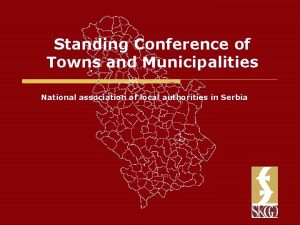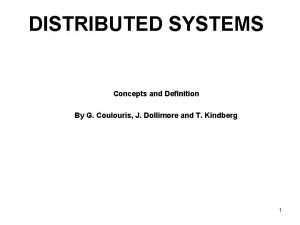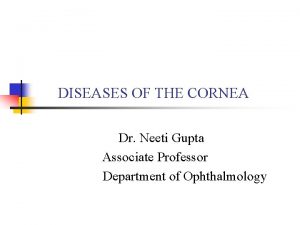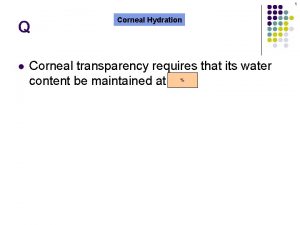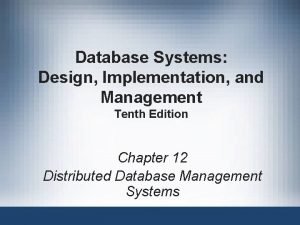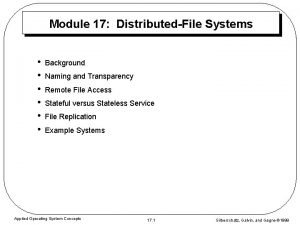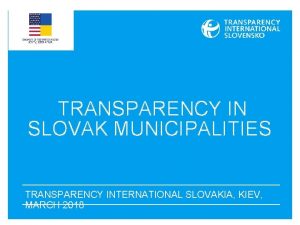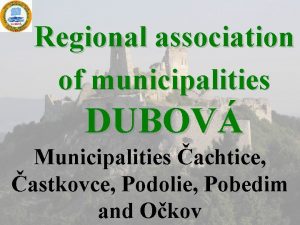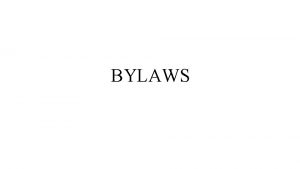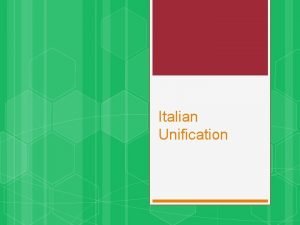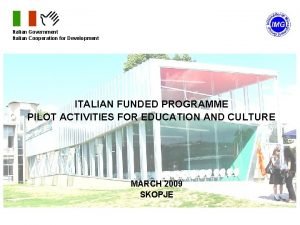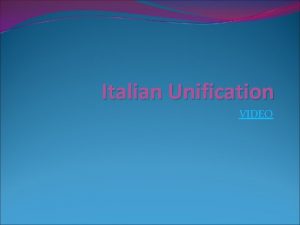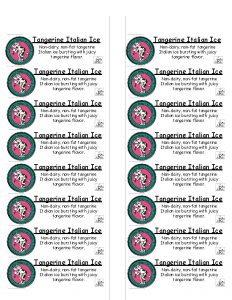Transparency and performance in the Italian Municipalities EMMA

















- Slides: 17

Transparency and performance in the Italian Municipalities EMMA GALLI University of Rome Sapienza, Disse ILDE RIZZO University of Catania, Department of Economics and Business CARLA SCAGLIONI Richmond University – Roma Center Study, Department of Economics and Business 1

Research questions Ø Diffusion of corruption and abuse of power in governments have led to a growing demand of access to public information Ø Public administrations have been required to be more transparent in providing information about their activities ØIntegrity and performance are two important dimensions of public action: are they closely related to transparency? ØIs transparency an effective tool to reduce corruption, improve the effectiveness of the public management and enhance accountability? 2

Related literature (1) ØA branch of literature focuses on the relation between transparency and the performance of the institutions … … in particular between trasparency and corruption (see, among others, Blumkin e Gradstein, 2002; Meijer, 2003; Islam (2004); Reinnika and Svenson, 2004; Azfar and Nelson, 2007; Olke, 2007; Kolstad and Wiig, 2009; Lindstedt e Naurin, 2010; Peisakhin and Pinto, 2010; Park and Blenkinsopp, 2011 ) Ø Other studies have investigated the main determinants of the level of transparency at local level (Piotrowski and Van Ryzin, 2007; Alt et al. , 2006; Guillamón et al. , 2011; Albalate; 2013; Alcaraz-Quiles et al. , 2015; Navarro et al. , 2014; Ferraz Esteves de Araújo and Tejedo-Romero, 2016) 3

Related literature (2) The measurement of transparency is still an open issue ØDifferent ways to measure transparency: ØApproach “bottom up”, based on the stakeholders’ opinions, like in Ferreira da Cruz et al. (2016) which develops a Municipal Transparency Index founded on a participatory method ØFew initiatives by international organizations such as the OECD Open Government Data project and partial/single country indicators provided by Transparency International ØApproach “top down” which develops legal/formal indicators (where the transparency obligations are required by the regulator, as in Italy) ØThis approach is followed in this paper 4

The legislative framework on transparency Ø In Italy since 2009 (Leg. decree n. 150/2009) legislation promotes performance, integrity and transparency of the public sector Ø Law n. 190/2012 - Anticorruption Bill - aims at contrasting corruption, focusing on prevention and using transparency as a major tool Ø Leg. decree n. 33/2013 (Code of transparency) provides several (about 270) detailed transparency obligations to be published in a standardised format (Amministrazione trasparente), regarding different aspects such as: —the organization of public organizations with respect to politico-administrative bodies and top public managers and officers —external consulting and collaboration —public procurement —management of properties and assets —timing of payments —provision of public services Leg. decree n. 97/2016 enlarges the scope of transparency, in analogy with the Freedom of information act (Foia) 5

The actors of transparency ØAt central level, the independent Anti-Corruption Authority (ANAC) Øissues guidelines (aimed at interpreting legislation and regulating its implementation) Øcarries out monitoring activities Øon single public organizations (in response to complaints on non compliance) Øon a sample of public organizations (ex officio, to check the degree of compliance to transparency obligations) Øissues sanctions for non compliance with mandatory publications (as stated by Leg. Decree n. 33, art. 14 and 22) ØAt decentralised level: Øeach public organization is compelled to implement transparency obligations (with high related administrative costs) and to identify a Responsible for Transparency Øthe Body of Internal Valuation (OIV) assesses the fulfilment of transparency obligations within each public organization and certifies it on the public organization’ s web site Øpublic opinion searches for information and the principle of civic access allows for the indirect monitoring of the degree of transparency of each public organization 6

Monitoring transparency (1) ØANAC monitoring activities ex officio have been carried out on selected transparency obligations, considered relevant to prevent corruption and foster accountability and because they bring about penalties for non compliance ØSince 2013 many resolutions have been issued by ANAC (n. 71/2013; n. 77/2013; n. 148/2014; 43/2016), each focusing on different sets of obligations ØTransparency obligations apply to more than 10, 000 public organizations → monitoring has been carried out on small samples: Ø 165 different types public organizations in 2013 -14; Ø 98 different types of public organizations in 2015; Ø 42 different types of public organizations in 2016 (March) ØMonitoring is carried out on OIV statements as well as directly on public organizations websites 7

Monitoring transparency (2) From ANAC monitoring activities (ANAC, 2013, 2015 and 2016), it emerges that: ØCompliance is rather jeopardized across different types of public organizations ØSmall municipalities exhibit the lowest level of compliance Ø Compliance differs depending on the type of information ØAt a first sight information which is more related to management seem to be less transparent than the other types of information ØThe direct monitoring of public organizations websites shows that some of OIV’s statements do not represent correctly the level of compliance of websites Ø Differences in the obligations monitored by ANAC resolutions through time make difficult to draw comparisons 8

Composite Transparency Indicator (CTI) Ø CTI is a new measure of transparency, constructed as a simple average of two sub-indicators referring to ‘Integrity’ (CTI Integrity) and ‘Performance’(CTI Performance) Ø For ‘Integrity’: items on income and asset disclosure and conflict of interest (on both politicians and top and senior public officials) Ø For ‘Performance’: items on the management of public property, the timeliness of public payments, the quality of public services Ø CTI uses the values attributed by OIVs to the items included in ANAC resolution n. 77/2013, according to a scale going from 0 to 3

Composite Transparency Indicator (CTI) Items included into the Composite Transparency Indicator (CTI). 10

Sample size and characteristics (1) The information was collected for 109 main capitals of provinces - capoluoghi di provincia (some were excluded as OIV Certification was available, but not the values for each item) First-hand data collected from each municipality website: Ø OIV evaluations available in the ‘Transparent Administration’ Section Ø Wide heterogeneity in displaying the data across municipalities Ø Incompleteness of information 11

Sample size and characteristics (2) ØAs it is a first attempt to measure the degree of transparency for the Italian municipalities, we compare our results with the performance in the provision of local public goods and services using official data on quantitative level of the service provision provided by Open. Civitas dataset for the municipalities located in the Ordinary Statute Regions ØConsequentely, from our original sample we selected 81 main capitals of the Provinces (some were excluded as not present in Nifo and Vecchione dataset) displayed by Regions ØCapitals of the Special Statute Regions are excluded 12

Composite Transparency Indicator by Regions (1) CTI Marked differences across regions: • from 0. 04 (-96%) for Molise to 2. 23 (+123%) for Emilia Romagna • None of the municipalities located in the South is among the five most transparent • Lowest values are shown by Campania (0, 04) (-96%) Molise (0, 20) (-80%) • Marche and Puglia are almost aligned with the Transparency Average Compliance (1, 26) With respect to the national average: Ø Southern and Central Regions show low values (-58% and +22%, with the exception of Lazio and Puglia) Ø Northern municipalities are more diversified, going from 0. 77 (-23%) for Piemonte to 2. 23 (123%) for Emilia Romagna 13

Composite Transparency Sub - Indicators by Regions (2) CTI Integrity CTI Performance 14

Main results Regarding Integrity, on average Northern-Regions display a positive value although just above the average (+1%), while the Central and Southern ones show negative values (-11% and -47%). Liguria shows the highest value (+50%), while Molise the lowest (-91%) In terms of Efficiency/Performance, on average Northern and Central-Regions perform significantly above the average (+78% and +56%), Southern Regions show a negative average (-68%). Emilia confirms the highest value +237%, while Molise the lowest (-100%) Best performers are aligned with the results obtained for the CTI 15

Transparency and performance CTI QUANTITATIVE LEVELS OF PUBLIC SERVICES 16

Conclusions ØWe develop a new measure of transparency (CTI) using the information provided by public administrations and validated by OIV Ø We disaggregate CTI in two components: Integrity and Performance, to distinguish the different aspects of transparency Ø Our indicators show a satisfactory correlation with the official data on municipalities performance provided by Open. Civitas ØOur results suggest that: I. our indicator is reliable and robust in representing transparency II. transparency may favor accountability Ø Italian municipalities exhibit a quite diversified picture where the degree of transparency seems to be related to public spending performance 17
 Standing conference of towns and municipalities
Standing conference of towns and municipalities South cotabato municipalities
South cotabato municipalities Distributed systems coulouris
Distributed systems coulouris Transparency in learning and teaching
Transparency in learning and teaching Ap social audit
Ap social audit Transparency in surrealism
Transparency in surrealism Scale surrealism definition
Scale surrealism definition Massachusetts
Massachusetts Entsoe transparency platform
Entsoe transparency platform Scaling transparency hides
Scaling transparency hides Corneal transparency
Corneal transparency Ocp transparency portal
Ocp transparency portal Corneal transparency
Corneal transparency Transparency qualitative research
Transparency qualitative research Distributed database transparency features
Distributed database transparency features Linguistic transparency
Linguistic transparency Naming transparency
Naming transparency Transparency institute
Transparency institute
